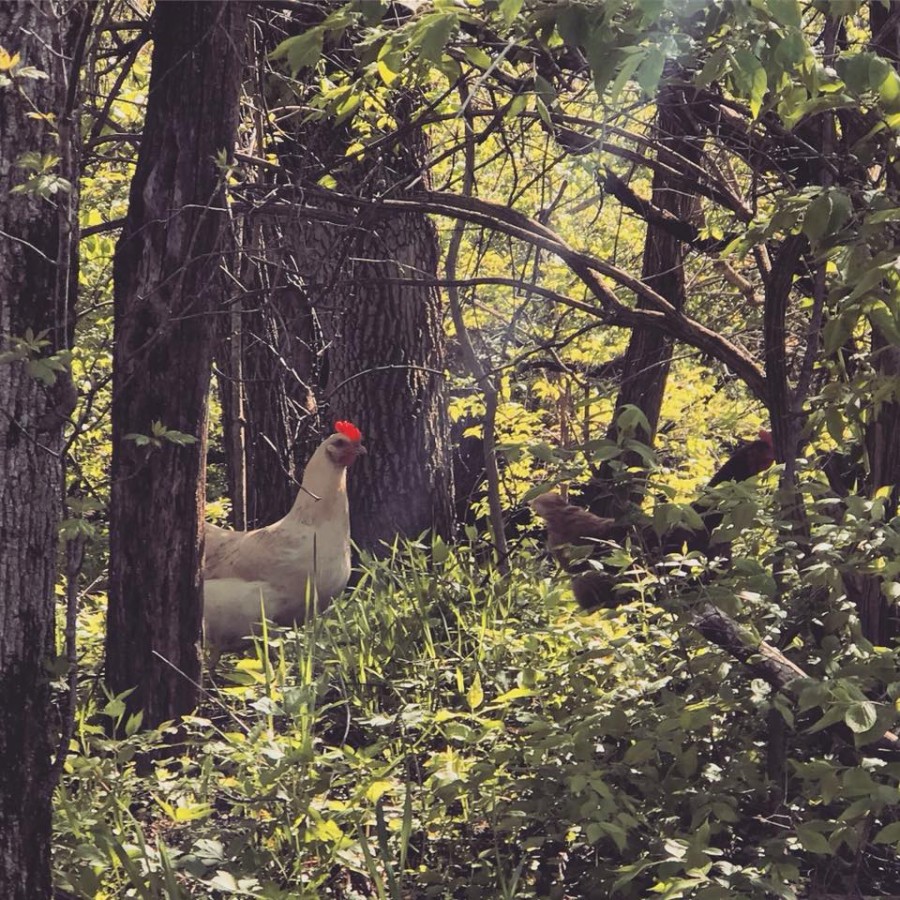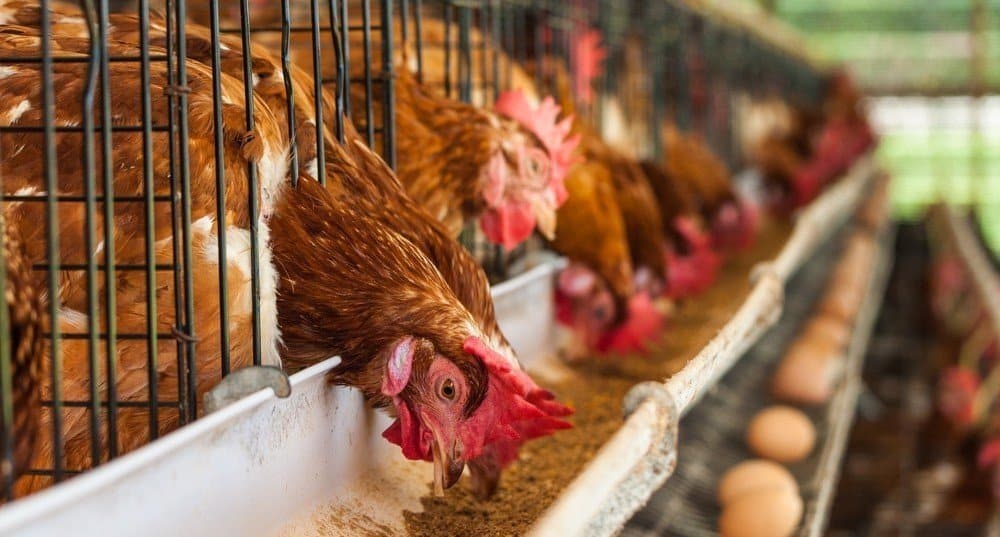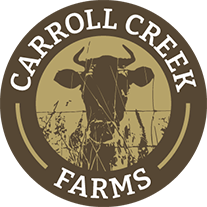Blog
Living their best lives?

Living their best lives?
The picture that is shown on the right spurred a comment on our facebook page last month from a very thoughtful woman who follows us on that social media platform:
"Probably a weird question but here it goes: with free range how many do you lose to just not coming back to the barn, wandering too far, or predators?"
Great question! And ironically on instagram I used the hashtag for the same picture #livingtheirbestlives. But are these free range hens really living their best lives? Or are they living a much more dangerous one than their conventionally farmed counterparts?
Here at Carroll Creek Farms we have about 200 laying hens at any given time on the property. There are two coops which are roughly 10 by 16 feet provided for the chickens and this is essentially home base for the flock. We establish the coop as home for the chickens by keeping them penned in for the first week or two that they are grown up enough to be out of the brooder area and mix into the flock which is about four months of age.
After that the doors are open and they could leave and never return again. But, to my knowledge we have never had any wander off into chicken never never land, albeit we have 200 chickens so if one went missing we probably wouldn't notice right away.
The flock of laying hens have their coop opened at about 6 a.m. when we are doing morning chores and have it closed at night at about 9 p.m. to protect them from predators overnight. In the interim they roam the property like the picture shows foraging for food. We do supplement them with a natural layer ration of feed in the coop and there is a water bar between the two coops that has a constant supply of fresh water. They also have nesting boxes to lay their eggs in located within the coops and with all of these things plus the imprinting done up front they return to this area at dusk to roost.
The challenges we face with allowing chickens the ultimate freedom with a no fence lifestyle are the following:
- They lay eggs, poop, and roost everywhere!
- I wish I could tell you that they all return to the coop at night...however some roost in the hay feeders in our other livestock barn, some roost in the rafters of our loafing shed, some roost in the hog feeders. The hens also lay eggs in all these places making the chore of collecting eggs a year round Easter egg hunt. Oh yes, and they poop all over every surface inside our other livestock barn.
- Predators (WARNING FULL TRANSPARENCY AND SOMEWHAT GRAPHIC DESCRIPTIONS)
- I have been up since 3:03 am this morning because my "mom ears" heard through our open windows this morning the shrilly chlucks of our meat chickens in the hoop pens. I went outside in my flowered robe with a 12 gauge to find a opossum who had pulled the head off one bird and was calming having a late night feast. After filling him with lead and putting him and decapitated bird in the compost I was somehow unable to go back to bed. In conventional poultry farms birds are kept in large rectangular barns where there are hard sided (usually concrete) walls and a metal roof that fully protect the livestock (trust me Tyson is not sitting outside in the middle of the night protecting their chickens with fashionable sleepwear and old shotguns) . They simply do not have the predator problems we do by allowing the animals to roam or keeping them in open air loose netted pens and experience basically no loss of animal life due to the realities of the food chain not coming into play within their controlled environments. Last month the neighbor dog killed six laying hens. Prior to that an owl was getting them when we were letting them out before it was fully light out. Hawks have swooped in from the sky and mink have crawled out from the creek. Raccoons have gotten into our meat chickens over the years and killed as many as they could grab through the bars. One time we came home from work a few years ago and found that a fox had killed 30 chickens and made cashes of food with their bodies for later in our garden, under the air conditioning unit, and even under our children's toys. Farming can look very romantic the way we do it with the green grass, lush forests, and animals without cages but there is a harsh reality that with this great freedom also comes the fierce realities that mother nature provides. We lose about five percent to nine percent of our flock to predators on an annual basis which begs a tough question:
Are the upsides of a confined poultry lifestyle in regards to safety and protection more important than a higher level of animal welfare and environmental enrichment?
Let us know your thoughts on this matter or any other questions you might have about our farm, the agricultural industry, meats, or livestock and we will answer them as time allows!

For more information about the conventional egg industry here in Ohio please view this educational you tube video:
https://www.youtube.com/watch?v=Tr-TkFZeNDc
